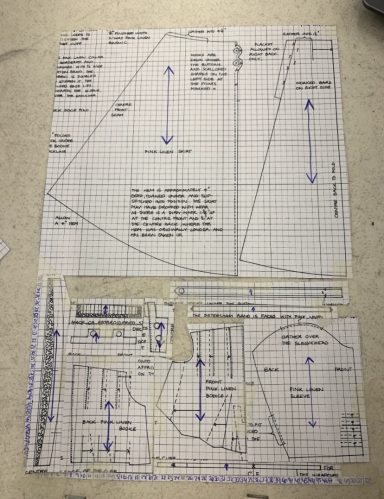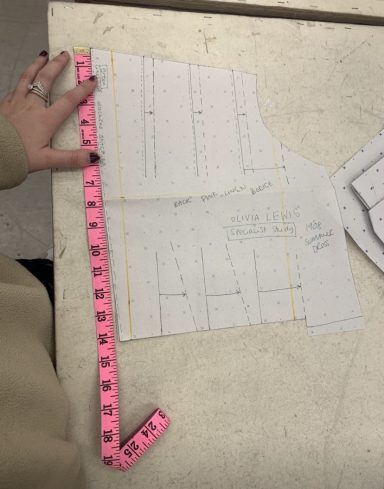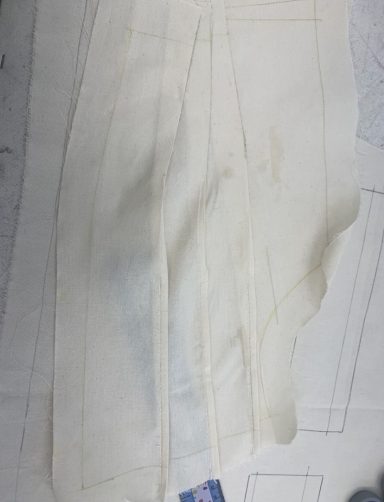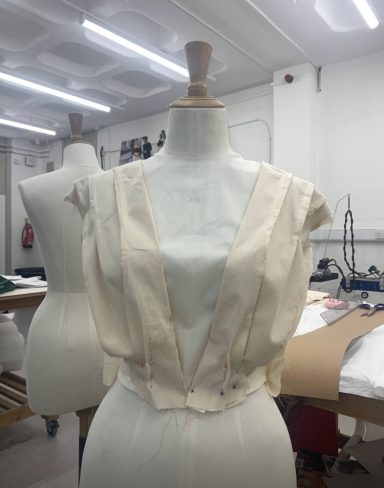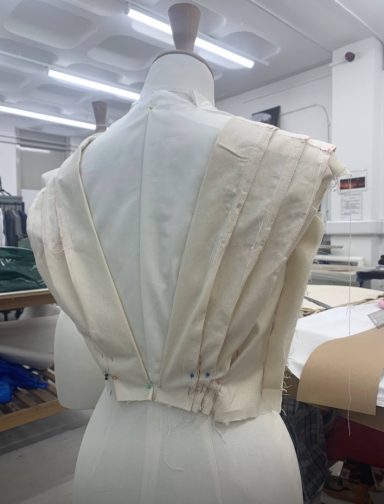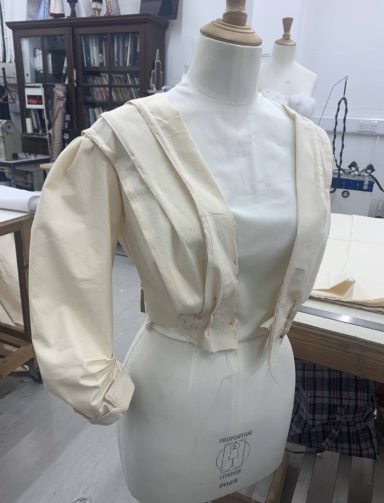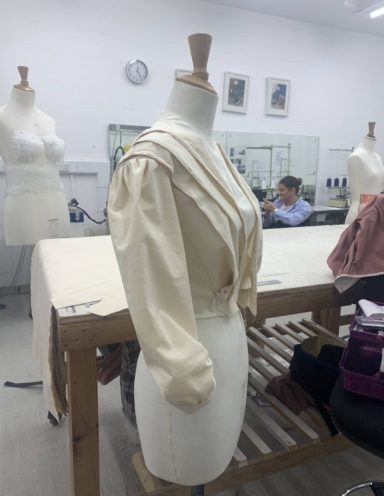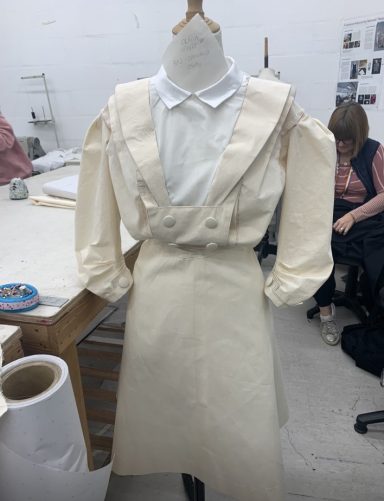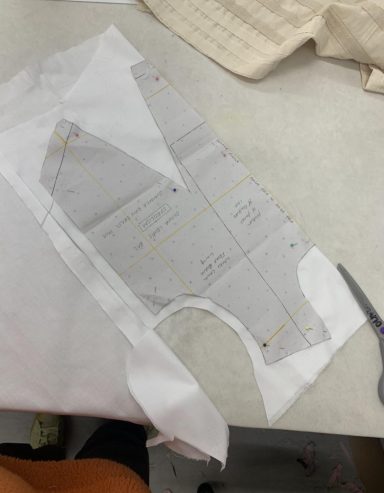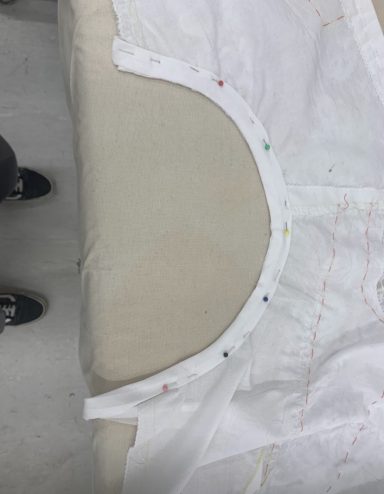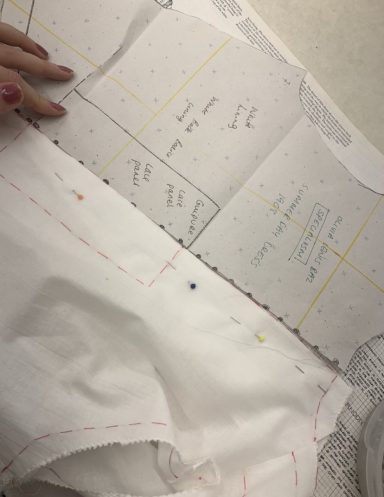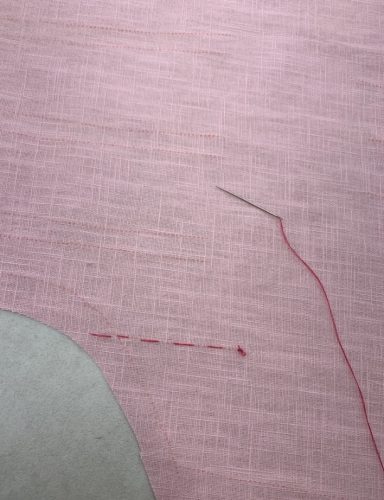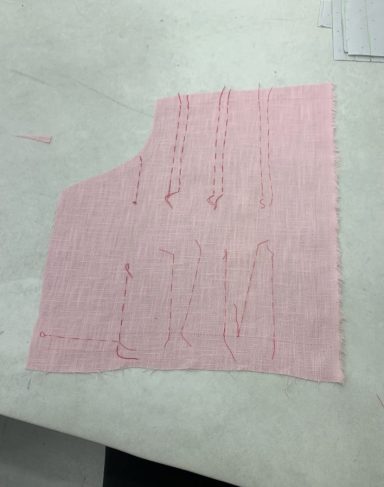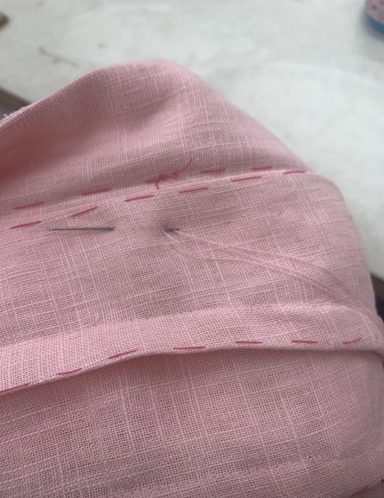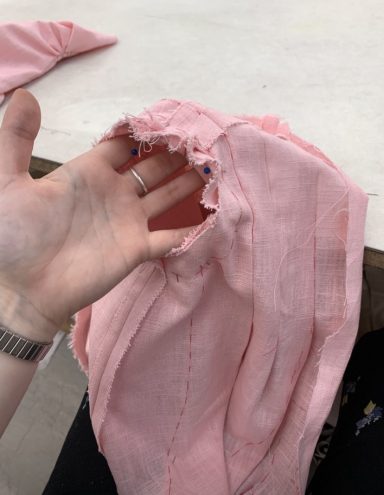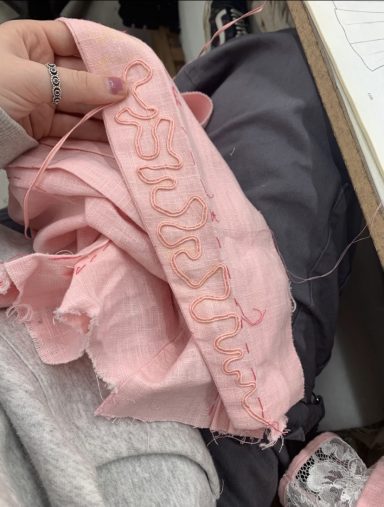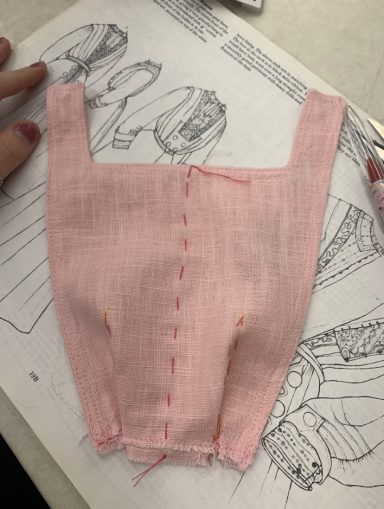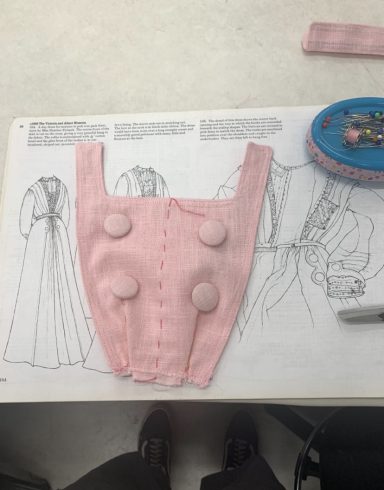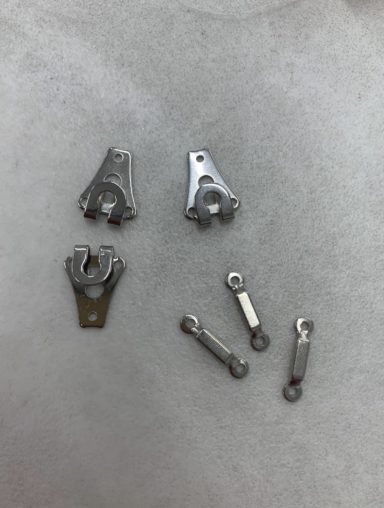1908 Pink Linen Day Dress
As part of my BA2 Specialist study at university, I researched historical techniques and used Janet Arnold's Patterns of Fashion 2 as a key reference. The original garment I studied is displayed at the V&A Museum in London. You can view more details by clicking [Here].
The Making Process
- Begin by enlarging Janet Arnold's pattern from Patterns of Fashion 2 onto dotted paper, using the scale provided in her book. Ensure accurate scaling for precision.
- Transfer the scaled pattern onto calico to create a toile (mock-up). Assemble the toile and make any necessary adjustments for fit and design accuracy.
3. Once the toile is finalized, use it to cut all pattern pieces from the chosen fabric. Handle each piece carefully to maintain alignment with the grainline.
4. Begin by tacking over the pattern you’ve traced onto the fabric using a tracing wheel.
5. Start assembling the costume, starting with pleating the front and back panels. Ensure precise pleats and symmetry.
6. Add pin tucks to the front and back panels, ensuring they align perfectly at the shoulder seams.
7. Sew hook-and-bar fastenings down the center back for closure. Install additional fastenings on the waistband and belt for structural integrity.
8. Attach a Petersham waistband for durability and period-appropriate detailing.
9. Cover buttons by hand and sew them onto the garment as per the design. Add lace cuffs to the sleeves for an authentic 1908 touch.
Final Images
Janet Arnold 'Patterns Of Fashion 2' Recreation
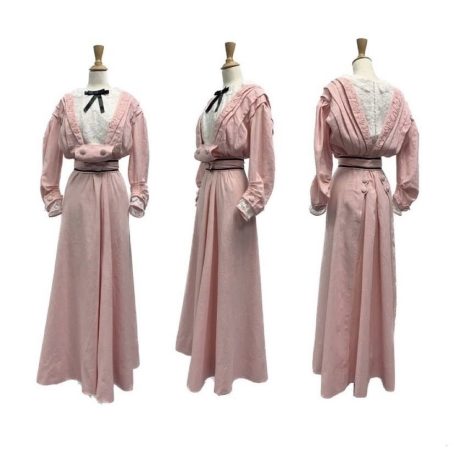
oliviarosedesign.com
We need your consent to load the translations
We use a third-party service to translate the website content that may collect data about your activity. Please review the details in the privacy policy and accept the service to view the translations.
